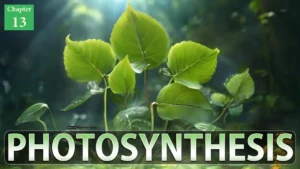Download NEET Biology Study Materials in Tamil
Download NEET Biology Study Materials in Tamil:- If you’re looking to download NEET Biology materials in Tamil, there are a few things you should know. NEET, or the National Eligibility cum Entrance Test, is a highly competitive exam for students who wish to study medicine or dentistry in India. Biology is a crucial subject in the NEET exam, and there are many resources available to help you prepare.
Download NEET Biology Study Materials in Tamil
01 உயிறுலகம்
02 உயிரியல் வகைப்பாடு
03 தாவர வகைப்பாடு
04 விலங்கு வகைப்பாடு
05 தாவர புற அமைப்பியல்
06 தாவர உள்ளமைப்பியல்
07 விலங்கின அமைப்புநிலை
08 செல் உயிரியல்
09 செல் சுழற்சி மற்றும் செல் பகுப்பு
10 உயிரிய மூலக்கூறுகள்
11 தாவரங்களில் நீர் கடத்துதல்
12 கனிம ஊட்டம்
13 ஒளிச்சேர்க்கை
14 தாவரங்களில் சுவாசித்தல்
15 தாவர வளர்ச்சி மற்றும் ஹார்மோன்கள்
16 செரித்தல் மற்றும் உட்கிரகித்தல்
17 சுவாசம் மற்றும் வாயுப்பரிமாற்றம்
18 உடல் திரவம் மற்றும் இரத்த ஓட்டமண்டலம்
19 கழிவு நீக்கமும் ஊடுகலப்பு ஒழுங்குப்பாடும்
20 இடப்பெயர்ச்சி மற்றும் இயக்கம்
21 நரம்பு கட்டுப்பாடும் ஒருங்கிணைவும்
22 வேதி ஒருங்கிணைவு
23 உயிரினங்களில் இனப்பெருக்கம்
24 ஆஞ்ஜியோஸ்பெர்ம்களில் பால் இனப்பெருக்கம்
25 மனித இனப்பெருக்க மண்டலம்
26 மனித இனப்பெருக்க நலம்
27 மரபியல்
28 மூலக்கூறு அடிப்படையிலான பாரம்பரியம்
29 பரிணாமம்
30 மனித உடல் நலம் மற்றும் நோய்கள்
31 உணவு உற்பத்தி மேம்பாட்டு வழிமுறைகள்
32 மனித நலனில் நுண்ணுயிரிகள்
33 உயிர் தொழில் நுட்பவியல்- அடிப்படை கொள்கை
34 உயிரி தொழில் நுட்பவியலின் பயன்பாடுகள்
35 உயிரினங்களும் – சுற்றுச் சூழலும்
36 சூழ்நிலை மண்டலம்
37 உயிரிய பல்வகைமை
38 சுற்றுச்சூழல் பிரச்சனைகள்
In conclusion, there are many resources available to help you prepare for NEET Biology in Tamil. With the right materials and plenty of practice, you can improve your understanding of the subject and increase your chances of success in the exam.
DOWNLOAD MORE NEET TAMIL MEDIUM STUDY MATERIALS
- [PDF] Download NEET Physics Study Materials in Tamil
- [PDF] Download NEET Chemistry Study Materials in Tamil
- [PDF] Download NEET Biology Study Materials in Tamil



![[PPT] The living world Class 11 Notes](https://rajusbiology.com/wp-content/uploads/2024/06/PPT-The-living-world-Class-11-Notes-300x169.webp)

Thanks
Very very very use ful and good one